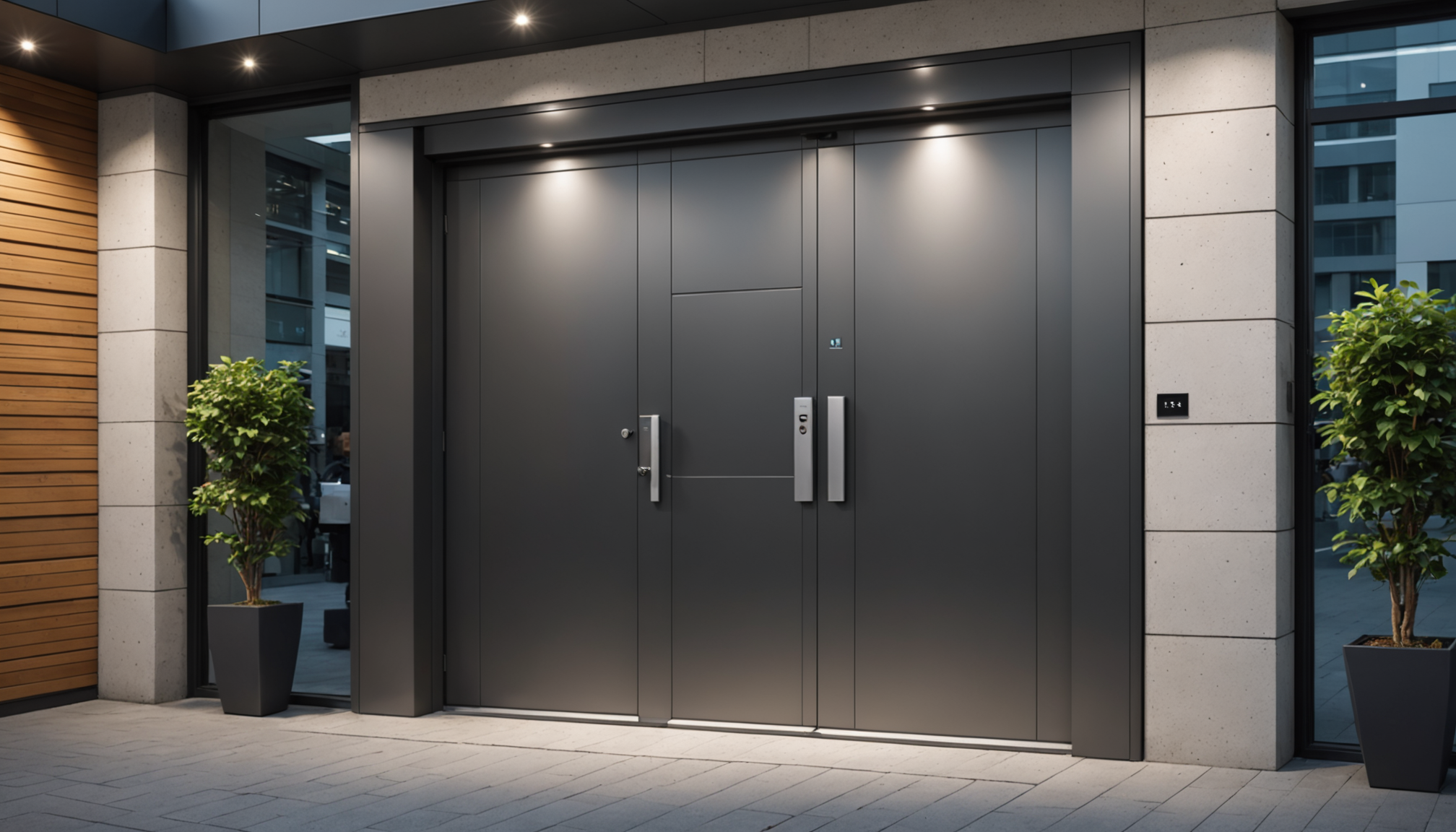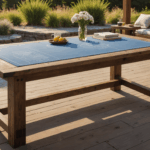Understanding the security strengths and weaknesses of each door in your home is crucial to ensuring a fortified defense against unauthorized access. The first step in this process involves a comprehensive assessment of potential vulnerabilities. This initial evaluation allows you to identify weak points that could be exploited, providing a foundation for implementing effective security measures tailored to each specific situation.
Begin by surveying the surroundings and construction of each entryway. Evaluate the material, age, and condition of each door. Doors made of solid wood or metal generally offer more resilience than those constructed from hollow-core materials, which are easy targets for forced entry. Check for any signs of wear and damage, such as cracks or rot, especially in areas with extreme or fluctuating weather conditions.
Additionally, inspect the door frames and hinges, as these are common weak spots that intruders may target. Look for frames that might be loose or poorly aligned, and ensure that all hinges are secured with long screws that penetrate the wall stud to prevent tampering.
- Check for gaps between the door and the frame, which not only waste energy but can also be entry points for lock-picking tools.
- Evaluate the positioning of windows adjacent to or within the door structure. Windows can compromise security because they present an easy opportunity for a burglar to reach locks from the inside.
- Determine if the door’s location is concealed or openly visible from the street. While privacy can be advantageous, it might also offer cover for illicit activities.
Also, take the time to observe any existing security measures. CCTV cameras, motion sensors, or flood lighting nearby can either act as deterrents or, if poorly maintained, provide a false sense of security. Make a note of the reach and coverage area of these technologies to appropriate their benefits adequately.
It’s helpful to create a table comparing key features that might impact the security of your doors, which can guide your next steps in fortifying each entry point:
| Feature | Benefit | Potential Weakness |
| Door Material | Enhanced structural integrity | Prone to wear; less durable in older models |
| Frame Stability | Secures door in place | Vulnerable to loosening over time |
| Hinge Security | Prevents easy removal of the door | Weak hinges can be easily bypassed |
| Window Position | Allows for increased visibility | Facilitates access to locks |
| CCTV Coverage | Acts as a deterrent | Limited by range and interference |
Performing this detailed assessment provides a clear understanding of security gaps that need addressing. By systematically identifying areas of vulnerability, you lay the groundwork for making informed decisions about reinforcing your home’s security architecture, ultimately ensuring a robust protective barrier against potential threats.
Reinforce entry points
Strengthening the physical aspects of your doors is a fundamental step in enhancing overall security. To begin, there are several methods and materials that can be employed to bolster the integrity and resilience of entry points:
- Upgrade Door Materials:
- Consider replacing vulnerable hollow-core doors with solid-core options made from materials such as solid wood or metal. These provide significantly more resistance to forced entry attempts.
- For exterior doors, fiberglass or steel options are optimal, offering increased durability and often coming with reinforced cores.
- Enhance Door Frames:
- Inspect and replace any damaged or weak door frames with reinforced options, such as those constructed from steel or other robust materials.
- Install a door jamb reinforcement kit. This can provide additional security by strengthening the area where the door frame meets the wall, particularly around the lock area.
- Secure Hinges:
- Opt for hinges with security pins that make it difficult to remove the door, even if the hinge pins are accessed from outside.
- Ensure that all hinge screws are long enough (at least three inches) to reach deeply into the doorframe and the wall stud, minimizing the risk of door removal through forceful entry.
- Add Reinforcement Plates:
- Install a door reinforcement plate or wrap-around kit for the lock set area. These enhance the strength of the door and prevent it from being split during a forced entry attempt.
- Consider adding heavy-duty strike plates with longer screws to the doorjamb, which offer a more secure attachment than standard plates.
- Utilize Security Bars or Devices:
- Install a door security bar or a floor-mounted barricade. These devices serve as an additional physical barrier to prevent unauthorized opening, especially during nighttime or when the house is unoccupied.
- For sliding doors, place a sturdy metal or wooden rod in the bottom track to hinder the door from being slid open forcefully.
Improving the physical attributes of a door creates a formidable deterrent against unwanted intrusions. By following these strategic reinforcement steps, you ensure that each entry point within your home is optimized to withstand various forms of break-in attempts, thereby preserving the safety and security of your living environment.
Install reliable locks
When it comes to enhancing your home’s security, installing reliable locks is one of the most effective measures you can take. The lock is often the first line of defense against intruders, so choosing high-quality, dependable options is essential to fortifying this critical component of door security.
Invest in deadbolt locks for your doors, as they offer superior protection compared to standard spring bolt locks. A robust deadbolt lock extends deeper into the doorframe, providing a much stronger hold and is typically more resistant to picking or jimmying. Consider opting for a double-cylinder deadbolt, which requires a key for both sides of the door. While this might seem less convenient, especially during emergencies, it significantly amplifies security for doors flanked by windows, as intruders cannot simply break the glass and unlock the door from the inside.
Upgrade to high-security locks designed for heightened resistance against picking, drilling, and bumping. These locks often come with patented key designs that prevent unauthorized duplication, ensuring no one can replicate your keys without proper permission. Reputable brands offer locks with complex pin configurations and hardened steel inserts that are built to withstand even the most determined efforts at forced entry.
Consider integrating smart locks into your home security system, which not only replaces the need for traditional keys but also offers a suite of modern conveniences. These locks can be connected to a smartphone app, allowing you to monitor door status, grant temporary access to guests, and receive notifications when a door is accessed. Some models allow for biometric entry, such as fingerprint recognition, adding an extra layer of personalized security. Another advantage of smart locks is the ability to create temporary digital keys for housekeepers or delivery personnel, which can be disabled once they’ve served their purpose, providing you control over access without the hassle or risk of losing physical keys.
To further ensure security, any lock installed should come with a heavy-duty strike plate, fastened with long screws that burrow deep into the wall stud. This prevents the doorframe from splitting under pressure.
Selecting and installing a reliable lock system is a proactive approach to home safety, acting as a powerful deterrent against potential intruders. These locks not only safeguard your property and loved ones but also provide peace of mind, knowing that every entry point into your home is secured with the highest standards of security technology.
Incorporate smart technology
In today’s digital age, integrating smart technology into your home security system can significantly enhance your protection strategy. These innovations go beyond traditional security measures, offering a convenient, efficient, and often more comprehensive approach to safeguarding your home. Smart technology brings a range of customizable options that allow you to actively monitor and control door security even when you’re miles away.
One of the primary advantages of smart home security systems is remote access control. By incorporating smart locks and systems that connect to your smartphone or computer via an app, you can manage and monitor entry points in real-time. This means you can lock or unlock doors from anywhere, providing unmatched convenience and peace of mind. This feature is particularly useful if you need to let in guests, service providers, or family members who arrive when you’re not home. The ability to control access without needing to share physical keys enhances security and offers flexibility.
Smart security systems also enhance situational awareness with real-time alerts and monitoring. These systems can send instant notifications to your device about any unusual activity, such as a door being opened at an unusual time, or if an incorrect access code is entered multiple times. This immediacy ensures that you are always aware of the security status of your home, allowing for quicker responses to potential threats.
Video doorbells and smart surveillance cameras are additional components that can be integrated into your smart home security setup. These devices offer the benefit of visual monitoring, allowing you to see who is at your door before opening it. Some models even incorporate two-way audio, enabling you to communicate directly with visitors without having to compromise your safety by opening the door. High-definition video captures clear images that can serve as valuable evidence in case of any security incidents. The recorded footage can be stored on cloud services, ensuring that you have access to the data whenever you need it.
Moreover, by automating operations through smart home technologies, you can create schedules that enhance the security and efficiency of your home. For instance, you can program the doors to lock automatically at certain times or synchronize with your security lighting system to enhance deterrence against intruders. This automation not only ensures that security measures are consistently in place but also saves time and reduces the chances of human error.
When selecting smart technology for your home, prioritize systems known for robust security protocols, such as end-to-end encryption and multi-factor authentication. These features prevent unauthorized access to your security data, ensuring that only you or those you trust can modify settings or gain access to your home.
By embracing smart technology, you can transform your home’s security into an intuitive, responsive system that adapts and responds in real time, enhancing the safety of your home seamlessly and stylishly. This contemporary approach to securing your home not only fortifies your external defenses but also enriches your lifestyle by delivering control and information directly to your fingertips.
Conduct regular maintenance
Regular maintenance is a key component in ensuring that your door security measures remain effective over time. The efficiency and durability of security systems, hinges, locks, and other installations can diminish if not properly maintained, making regular check-ups vital. To keep your doors in optimal condition, establish a routine schedule that includes visual inspections, testing, cleaning, and lubrication.
Start by examining the physical state of each door, including hinges, locks, frames, and any additional reinforcement or security features you’ve installed. Look for signs of wear or damage such as rust, cracks, or loosened components, as these can compromise security. Tighten any loose screws or bolts, and consider replacing worn parts as necessary. Hinges, in particular, should be oiled regularly to ensure smooth operation and to prevent squeaking, which can alert intruders to your presence or absence.
Locks require special attention during maintenance routines. Dust and debris can accumulate within lock mechanisms, so it is beneficial to clean them with a non-corrosive lock cleaner every few months. Test all locks to ensure they engage and disengage smoothly. If you detect stiffness or difficulty, it may be time to replace or upgrade the lock to avoid its failure at a critical moment.
Modern smart locks and security features also necessitate regular software updates to patch vulnerabilities and incorporate new enhancements. Make it a point to check for firmware updates frequently and ensure they’re installed promptly. This applies to any integrated security systems, such as smart doorbells and surveillance cameras, to maintain their operational efficiency and security integrity.
Moreover, check the calibration of any smart devices and ensure that batteries are replaced or recharged as needed. An inactive or malfunctioning device due to power failure can create a significant breach in security. Regularly verify the alignment and responsiveness of connected devices to ensure everything functions in sync.
Addressing simple maintenance issues as soon as they arise prevents small problems from developing into significant security risks, ensuring that all elements of your door security system function seamlessly and collaboratively. This not only fortifies your home’s defenses but also maintains the longevity of your security investments, yielding peace of mind knowing that your home remains protected on multiple levels.
In conclusion, securing doors in every room of your home requires a multifaceted approach, from assessing potential vulnerabilities to conducting regular maintenance. By reinforcing entry points, installing reliable locks, and incorporating smart technology, you enhance your protection against break-ins. Consistent upkeep ensures that all security features remain in top condition, providing ongoing safety and peace of mind. Implementing these strategies establishes a strong, proactive defense for your home and its inhabitants.


